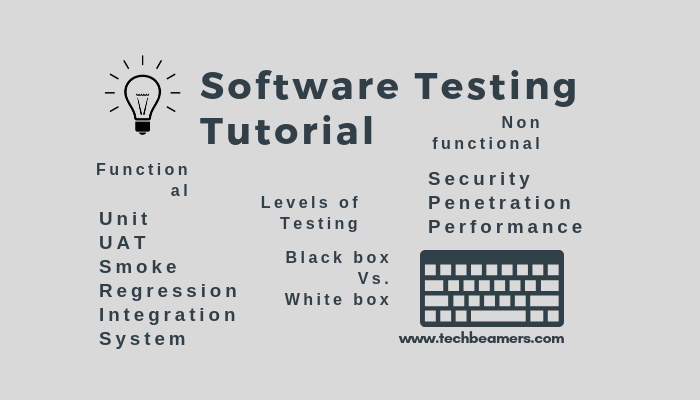Hey, Testing champions! Welcome to our amazing Software testing tutorial. We have gathered some of the most important pieces of Testing concepts here. Let us start with the most basic one first.
To begin with, Testing is a fundamental software engineering process that ensures a software application or product performs its intended functionality.
It finds anomalies in behavior, reports them as defects, and ensures that all such issues get fixed before delivering the product to market. Testing is a mandatory activity of all types of SDLCs to certify that the system possesses a certain level of quality.
Let’s now check what the book says about software testing, the type of testing (manual and automation), and different testing techniques and approaches.
Definition – Software Testing
The ANSI/IEEE 1059 is an international standard – It tells that testing is a process of examining a software artifact to identify the differences between actual and expected conditions (It means the bugs) and to assess the functionality of the same.
Types of Software Testing
1. Manual Testing
It is an engineering method to test software manually and to identify both functional and non-functional defects.
In this process, the tester thinks from the perspective of the end-user. He subsequently validates the system to check the behavior as mentioned in the requirement specification.
After that, he executes the planned test cases and produces the report on his own.
2. Automation Testing
Automation is an engineering practice to perform testing in an automated manner. It aims to speed up testing, eliminate manual efforts, and still able to find defects.
In this process, the tester writes test scripts using some automation tool, executes it, and produces the report automatically.
The most common automation tools are Selenium, FitNesse, Squish, and UFT for automating functional testing.
Software Testing Methods
In the first place, you should check upon the following popular testing methods.
1. Static Testing
2. Dynamic Testing
Follow the detailed coverage of Static and Dynamic Testing methods.
Testing Approaches
1. White box Testing
2. Black box Testing
Follow the detailed coverage on the White box, and Black box Testing approaches.
Levels of Testing
Generally, we can categorize testing into the following four levels:
1. Unit Testing
2. Integration Testing
3. System Testing
4. Acceptance Testing
Follow the detailed coverage on the Levels of Testing.
Types of Black Box Testing
1. Functionality Testing
2. Non-functionality Testing
Simultaneously, you can find out more on the Types of Testing here, and also some of the black box testing types such as User acceptance testing, and Pen testing.
During the course of developing a software product, there are different testing strategies to be applied for delivering a robust, error-free, and successful release. Hope, you should now be able to understand a bit of how can you achieve that in your projects.
Subsequently, you may also go through this comprehensive list of Manual testing tutorials. This page consists of study material providing all basic to advanced-level learning manual testing.

